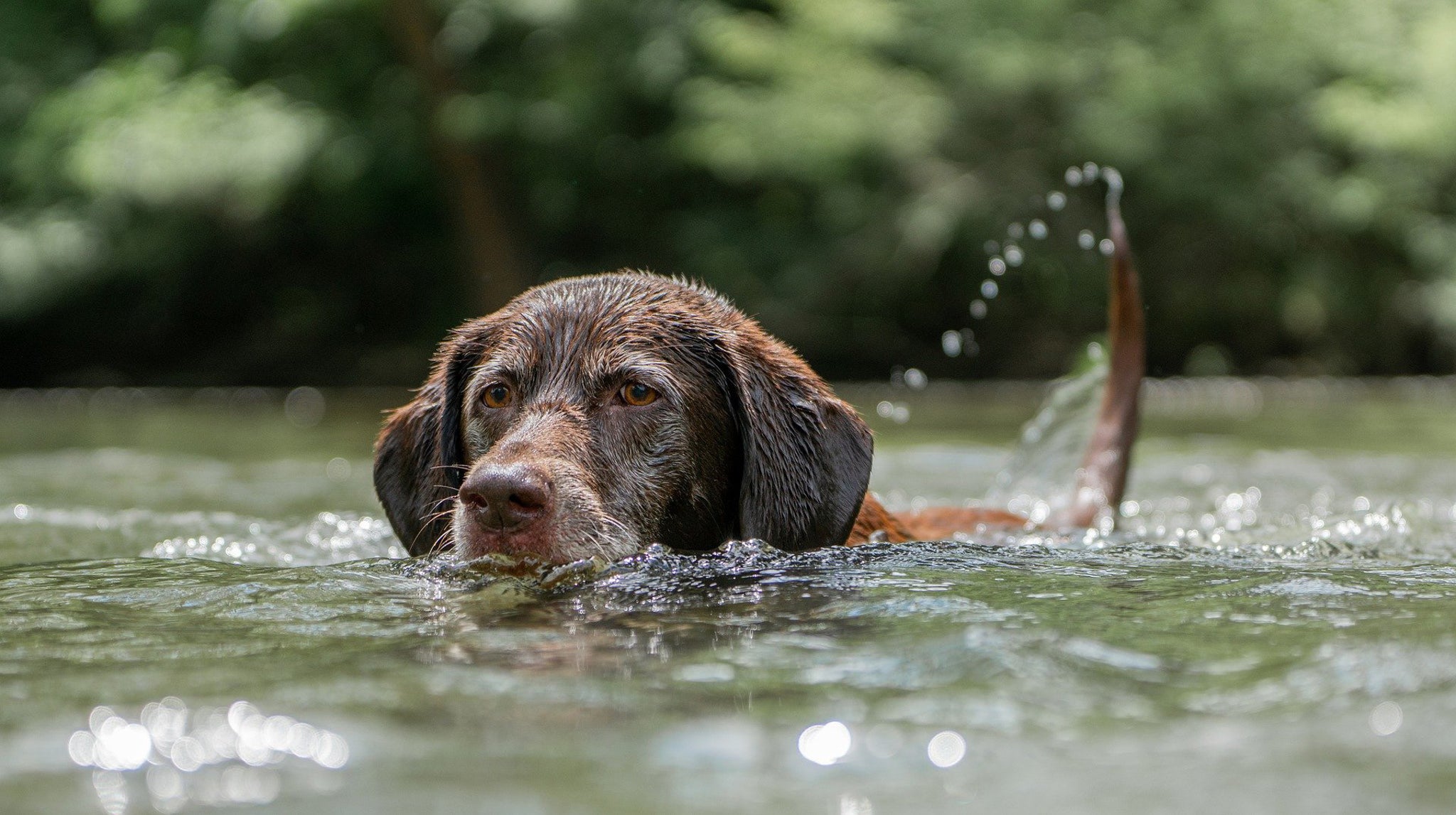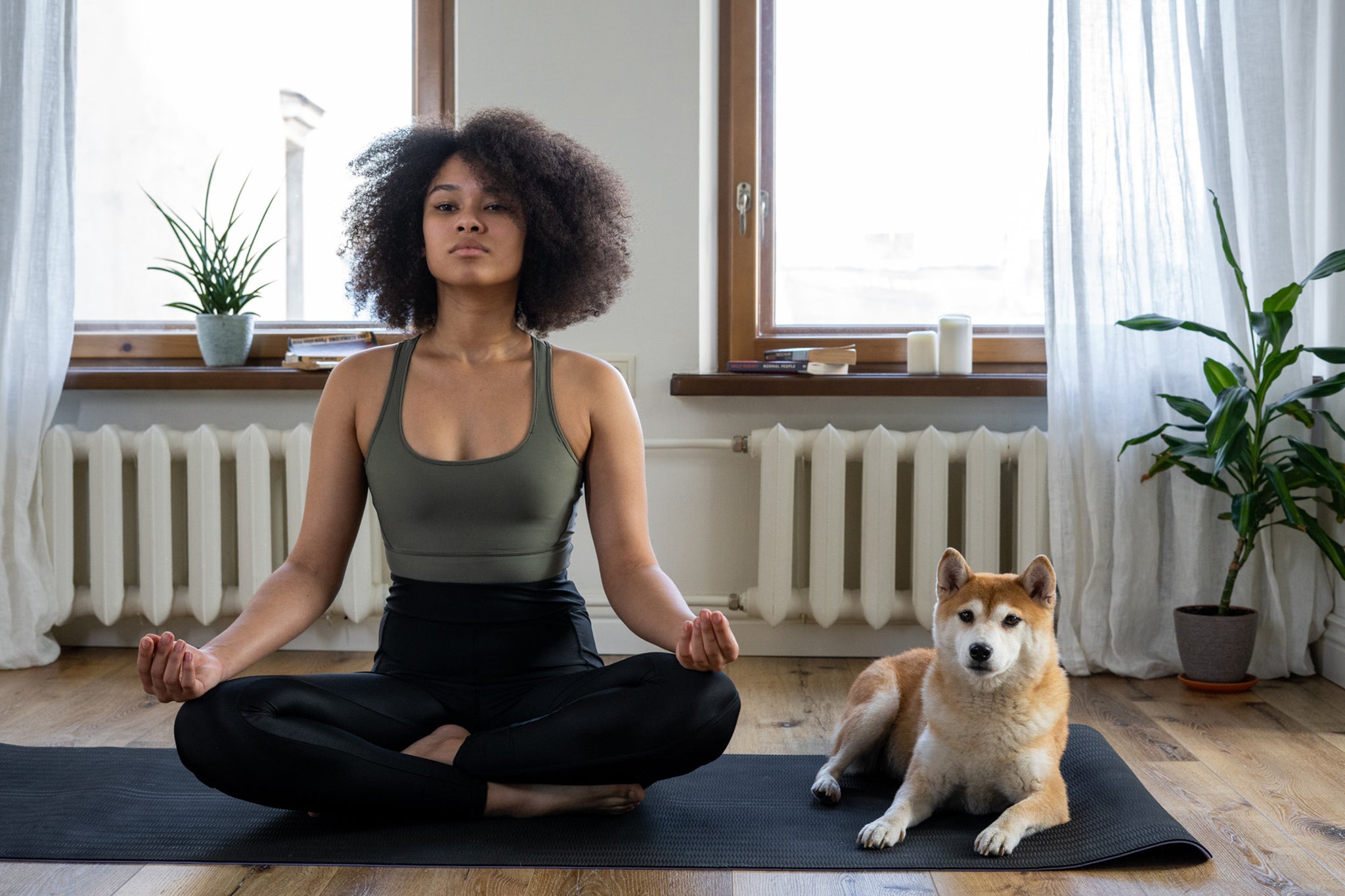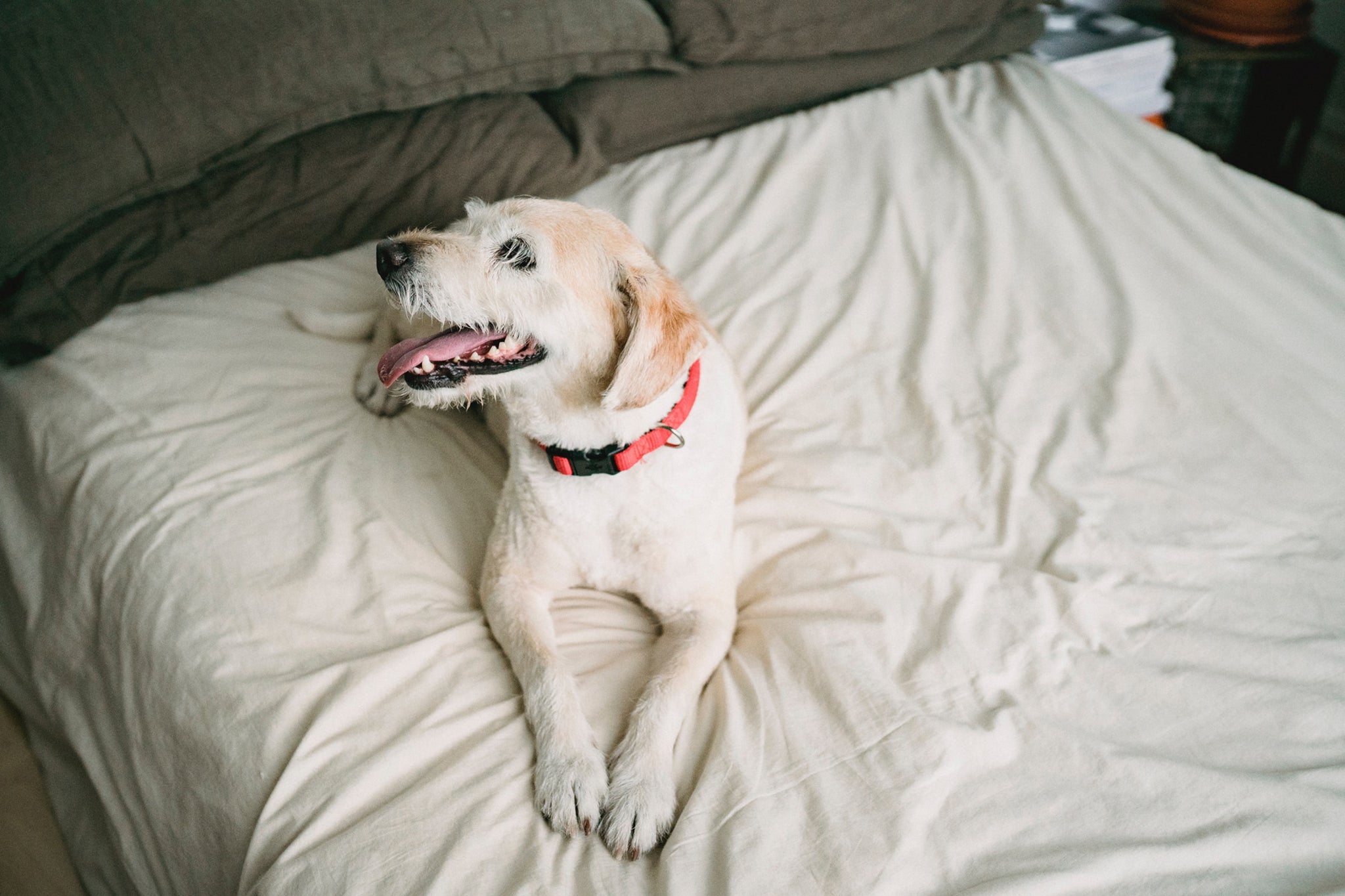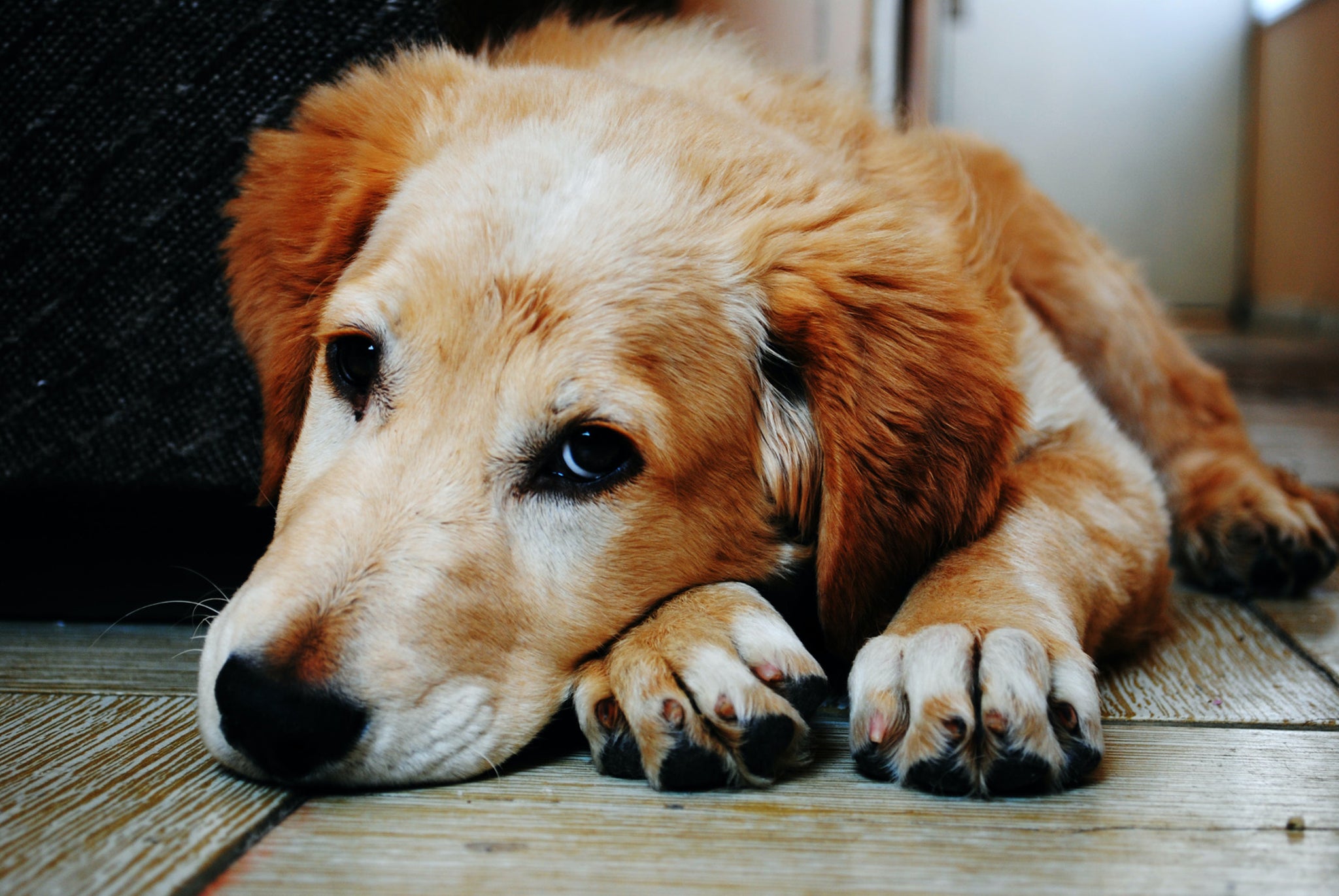You may notice that your dog starts to lay down for longer periods as they have gotten older. They have less playful energy at this age. This is no cause for alarm, and there are ways to keep them moving as they age.
Regular Exercise–Just Less Intense
Getting outside and walking is beneficial at any age. Just because your dog has less energy than they did as a puppy doesn’t mean they should stop moving altogether. Take your dog on shorter walks. You may need to move a bit slower than you used to but encourage your dog with praise and treats. The sights, sounds, and smells of the outside world will stimulate your dog’s brain.
Maintain a Healthy Diet
They may be moving less, which means their metabolism is also slowing. Consider lower calorie treats, and you may need to limit the amount of food to a healthy serving for their age. There are charts indicative of healthy weight for dogs, categorized by age. Maintaining a healthy weight will ease the strain on your dog’s joints, especially when using stairs or changing levels.
Go for a Swim
Swimming is recommended for older humans too as a mobile activity that is easier on joints. Lakes and streams outside are fun but be aware that they could slip on rocks or logs. You may only want to try this in warm months, as cold water can be harder on joints and muscles for dogs with arthritis. Search your local area for canine pools—some even offer underwater treadmills that can help with mobility. The warm water helps to stimulate circulation and warms the joints, making movement easier on your dog.

Keep Your Pet from Unsafe Areas
Use gates or a makeshift fence to prevent your dog from slipping or falling in an unsafe area. If they fall, they sometimes lose confidence in their abilities—you want to keep them confident, so they continue to try to move. Keep water and food on the ground level of your home or wherever they spend the majority of their time.
Downward Dog
Try stretching with your dog. They love to stretch when they wake up from a nap or good sleep. Stretching is great for mobility in humans and dogs, and there are guided stretches you can do with your dog. You may want to support them with an old t-shirt to help lift them around their abdomen. Some people recommend dog yoga, which incorporates stretching for both of you. This may be a fun way to bond and even laugh a little over some poses together.

Massage Muscles
Massaging joints and muscles is another great way to stimulate mobility. Veterinarians recommend massaging to increase circulation and release tension in joints and muscles. Humans appreciate massages, and your dog will appreciate the extra attention from you. Acupuncture may be another option, if pain is more chronic or deeper in the tissue.
Adjust Bedding
They may need new bedding that is more appropriate for their age. Make sure they have padding, as cold floors can aggravate sore joints. There are beds with special foam and padding to increase cushioning between them and the floor. Additionally, you’ll want to monitor their temperature and keep them warm with blankets or cool with a fan. Sunlight is also great for them, so during the day, you may want to keep their bed near a window. Better sleep will allow for better activity the next day.

Ask Your Vet
You may find greatest success in combining multiple approaches from this list. But your dog may require additional medical care if they are experiencing discomfort related to aging. The lack of mobility could be due to arthritis or another condition, so just keep your vet in the loop about your dog’s condition. They can share recommendations specific to your dog’s needs.




